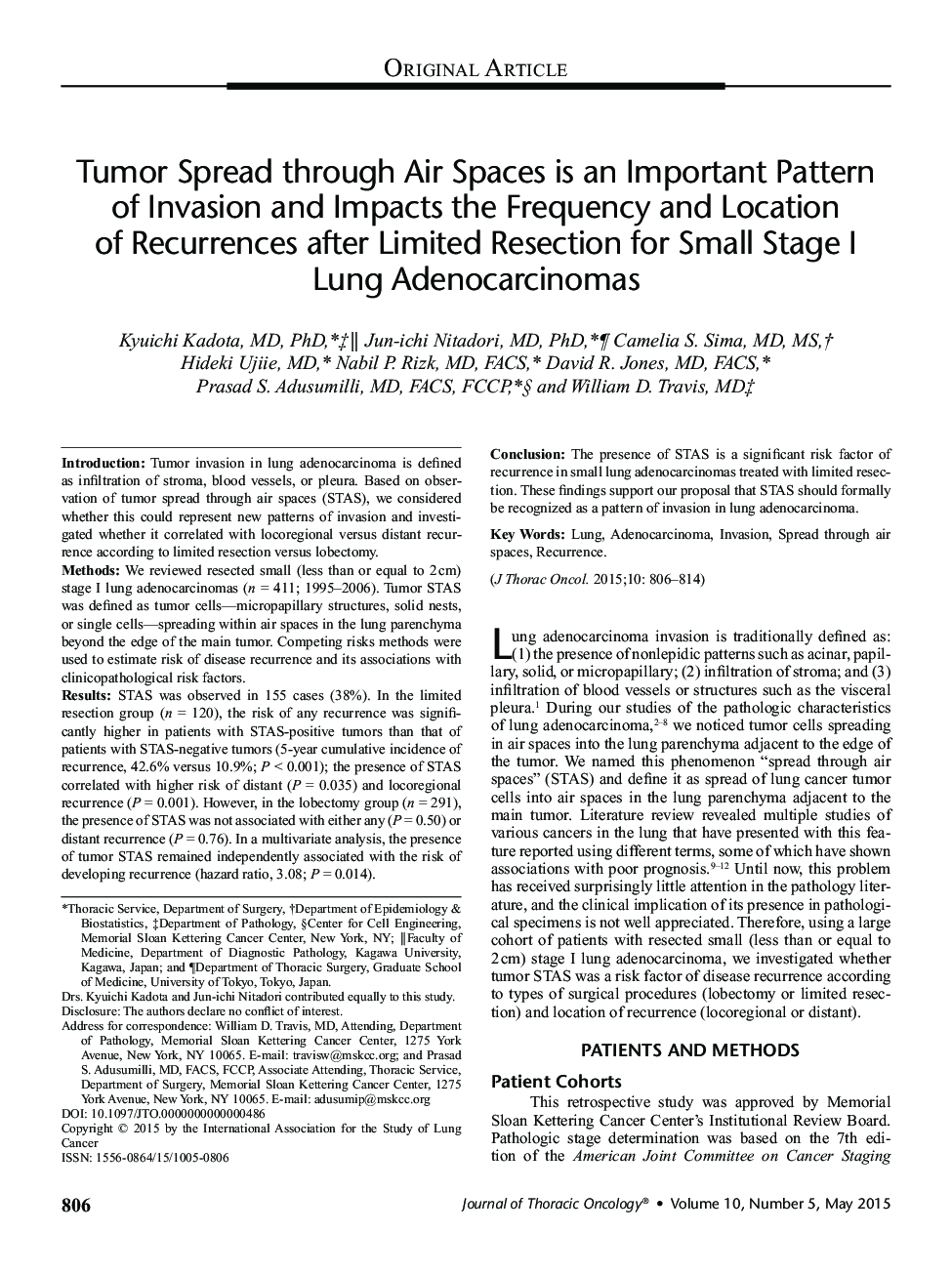| Article ID | Journal | Published Year | Pages | File Type |
|---|---|---|---|---|
| 3989623 | Journal of Thoracic Oncology | 2015 | 9 Pages |
IntroductionTumor invasion in lung adenocarcinoma is defined as infiltration of stroma, blood vessels, or pleura. Based on observation of tumor spread through air spaces (STAS), we considered whether this could represent new patterns of invasion and investigated whether it correlated with locoregional versus distant recurrence according to limited resection versus lobectomy.MethodsWe reviewed resected small (less than or equal to 2 cm) stage I lung adenocarcinomas (n = 411; 1995–2006). Tumor STAS was defined as tumor cells—micropapillary structures, solid nests, or single cells—spreading within air spaces in the lung parenchyma beyond the edge of the main tumor. Competing risks methods were used to estimate risk of disease recurrence and its associations with clinicopathological risk factors.ResultsSTAS was observed in 155 cases (38%). In the limited resection group (n = 120), the risk of any recurrence was significantly higher in patients with STAS-positive tumors than that of patients with STAS-negative tumors (5-year cumulative incidence of recurrence, 42.6% versus 10.9%; P < 0.001); the presence of STAS correlated with higher risk of distant (P = 0.035) and locoregional recurrence (P = 0.001). However, in the lobectomy group (n = 291), the presence of STAS was not associated with either any (P = 0.50) or distant recurrence (P = 0.76). In a multivariate analysis, the presence of tumor STAS remained independently associated with the risk of developing recurrence (hazard ratio, 3.08; P = 0.014).ConclusionThe presence of STAS is a significant risk factor of recurrence in small lung adenocarcinomas treated with limited resection. These findings support our proposal that STAS should formally be recognized as a pattern of invasion in lung adenocarcinoma.
